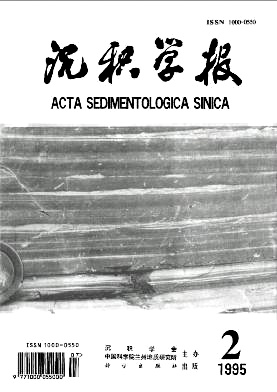Relationship between Oil and Gas of Bio-, Thermo-catalytic Transitional Zone
- Received Date: 1994-10-15
- Publish Date: 1995-06-10
Abstract: Carbon isotopic compositions of crude oil and natural gas can similarly indicate their characteristics of association. In this paper, types of oil - gas assemblage are classified based on the data of isotopic compositions of crude oil and natural gases in Liaohe Oilfield, of which hydrocarbon geochemistry has been studied well.With the study of Liaohe Oilfield, the relationship of the oil - gas isotopic composition of bio, thermo catalytic transitional zone (BTCTZ) in China is researched systematically and their types of oil - gas assemblage are divided, and the geochemical characteristics of different oil - gas assemblages for BTCTZ are discussed as well.According to the carbon isotopic composition of oils and methane and ethane of gases as well as to the geologic setting of Liaohe Basin, four types of oil - gas assemblages are divided, i. e., (1) the oil - gas assemblage of similar evolutionary stage and congenetic sapropel matters; (2) the assemblage of similar evolutionary stage of sapropel - humus matters; (3) the assemblage of similar evolutionary stage from homologous humus and (4) the oil- gas assemblage of mixture that the oils and gases would come from congenetic organic matters but different evolutionary stage, or similar evolutionary stage but different type of organic matters,or different matters with different evolutionary stage. All of the assemblages can be subdivided in terms of their evolutionary stage of the organic matter and have specific geochemical features and relationship of the isotopic compositions. From all of the assemblages, the oil - gas associations of different BTCTZ are researched emphatically.Because oil and gas from the same type and evolutionary stage of organic matter take corresponding distribution pattern of the carbon and hydrogen isotopic composition, the varied difference of them may identify the features of oil and gas generated from different type and evolutionary stage of organic matter. The systematic study of numerous oil and gas isotope data from more than ten sedimentary basins in China showsthat there are four oil - gas assemblages of BTCTZ, which are listed as follows:(1) The oil - gas assemblage of BTCTZ of sapropel organic matter. Its BTCTZ gas and immature - lowmature oil sourced from the same sapropel matter during similar evolutionary stage. its indictors are δ13C1 between - 52~- 45‰, δ13'Coil below - 28‰, δ13C2 below- 30‰, δDCH4 below - 250‰ and δDoil below -160‰.(2) The oil- gas assemblage of BTCTZ of sapropel - humic organic matter. It resembles type (1) but organic matter is sapropel - humus and δ13C1 between - 52~- 45‰, δ13Coil between - 28~- 25‰, δ13C2 between - 38~-26‰, δDCH4 between - 280~- 180‰ and δDoil between - 180~- 120‰.(3) The assemblage of BTCTZ gas from humus and oil from saporpel matter. This kind of gas is BTCTZ gas produced by humic organic matters and the oil may be from saropel - humic orgonic matter during the higher eviutionary stage. its isotopic compositions are δ13C1 between - 60~- 52‰, δ13Ciol between - 28~- 25‰.(4)The assemblage of BTCTZ gas from sapropel - humic organic matter and oil from saporpel matter.It's gas and oil originated from the same organic matter or different organic matters, but the evolutionary stage for oil was little higher than that for gas, and the mixture feature is obvious. Its carbon isotopic compositions are δ13C1 between - 60~- 52‰, and δ13Coil beolw - 28‰.The studies of isotopic composition relationship between gases and oils lead us to understand more about the origin and evolution of natural gas, particularly of BTCTZ gas. With the studies in this paper, it can be seen that almost all gases and oils in BTCTZ are the results of evolution from congeneitic matter in the same stage, and the existence of gases and oils in BTCTZ has been verified. It also corrects the concept that the BTCTZ gas was mixtule of biogenic gas and thermocatalytic gas. The studies show that the BTCTZ is an important stratum for oil and gas accumulation during the evolution of organic m
| Citation: | Liu Wenhui, Xu Yongchang. Relationship between Oil and Gas of Bio-, Thermo-catalytic Transitional Zone[J]. Acta Sedimentologica Sinica, 1995, 13(2): 4-13. |






 DownLoad:
DownLoad: